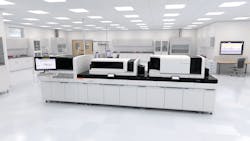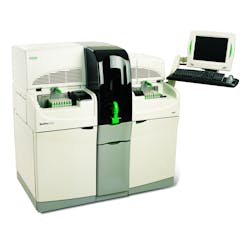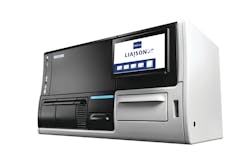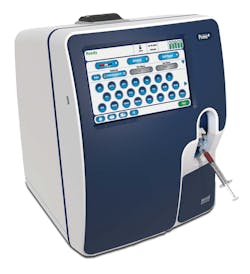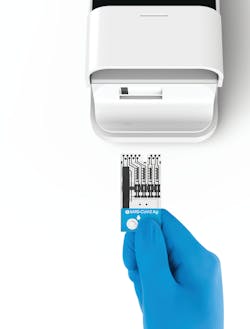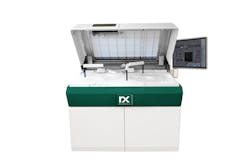Selecting the right analyzer technology to meet your laboratory’s testing needs
To help lab professionals determine the right analyzers for their labs, we asked leading analyzer manufacturers to comment on the latest trends in this area, new platforms and features that address current pain points (e.g., staffing shortages, supply chain disruptions), and factors to take into consideration when evaluating the analyzer technology landscape.
Staffing shortages
Lab staffing shortages continue to be a problem across the United States, as evidenced by the results of MLO’s 2022 Annual Salary Survey of laboratory professionals, where 43% of respondents said the current shortage has largely impacted their labs’ operational efficiency.1
Laboratories should consider their immediate needs and the growth goals of the organization when evaluating diagnostic testing solutions, according to Andrea Diebel, Marketing Instrumentation Product Manager, DiaSorin.
“A lab challenged with staffing shortages might urgently need to introduce automated, higher-throughput methods to improve their workflow,” said Diebel. “Those with growth mindsets should look closely at the test menu, especially unique offerings and tests in development, and consider the flexibility and capacity of the analyzer family and vendor to grow with them.”
When evaluating analyzer technology, Diebel suggests lab leaders ask the following questions:
- Will this analyzer make work simpler for my technicians?
- Can this system reduce send out costs and consolidate testing from other equipment, or even other labs?
- Will this instrument shorten turnaround times, improving the experience for both providers and patients?
“Having these conversations with vendors will help labs recognize the value in their solution,” Diebel added.
Process automation
Clinical lab professionals cite more reliable results, reduced errors, and the ability to view and analyze cumulative trends of data as key benefits of lab automation and informatics, yet 74% report that less than half of their lab operations are automated.2 To meet increased demand for automation, manufacturers are designing analyzers that minimize manual steps and seamlessly integrate with connected systems.
“Total workflow efficiency - both to meet current and perceived future demands - should be the key consideration when looking into purchasing any new equipment for the lab,” said Alejandro Mora, Head of Global Marketing, Workflow Solutions, Siemens Healthineers. “One of the key considerations in establishing the smartest workflow is process efficiency and the reduction of manual steps to improve quality, save time, and simplify workflows.”
Mora says labs today have more choices than ever when it comes to automated technologies, stating:
“Advances in data and process management have further transformed lab operations by leveraging data to drive smarter workloads and continuous workflow improvements—from reductions in aliquots to save costs or advanced result management protocols to guide patient-specific reflexive testing, to name a few. Smart integration between IT, automation and analyzers is key to realizing these data-driven advances.”
Siemens Healthineers has more than 140 workflow consultants that can help labs simplify processes and design optimal workflows, using simulator tools and process mapping to determine and map workflow processes. According to Mora, they can help guide labs in selecting an appropriate automation level, what tasks are automated, and where.
“Based on unique workflow and budget requirements, there are several automation options—from integrated automation to task-targeted automation, to total lab automation—that can enhance efficiencies in the lab,” Mora added. “Every lab will have its own set of variables that will guide how to improve space utilization, reduce staff motion, improve the work environment, and reduce material transportation.”
One solution Siemens Healthcare Diagnostics offers to labs in search of analyzer integrated automation is the Atellica Solution, which consolidates sample management technology, intelligent software, and IT to provide workflow efficiency with the flexibility to automate critical tasks with little or no additional footprint.
Workflow efficiency
Consolidation of platforms into a single, automated analyzer can help labs maximize their workflow efficiency and achieve LEAN processes, says Maria Crisostomo, BS, MBA, Sr. Sales Core Lab Product Manager, BioPlex 2200 Autoimmune/Infectious Disease Segment, Bio-Rad Laboratories. She recommends labs look for the following features and benefits when evaluating analyzer technology:
- Full automation with random-access sample processing
- Total Lab Automation (TLA) track line connectivity
- Reduced turnaround time, labor, and send-out tests
- Consolidation of tests and analyzers
- Highly secured web-based interface applications for remote monitoring, quality control data management systems and cybersecurity
She notes how the Bio-Rad Laboratories BioPlex 2200 System provides clinical labs a testing solution for maximizing efficiency and productivity, streamlining workflows, and minimizing costs. With over 50 multiplex assays available today and more in development, labs can consolidate platforms for autoimmune, infectious disease, and vitamin D testing on one platform for full automation, trackline connectivity, streamlined workflows, improved turnaround time, and confidence in results.
“The BioPlex 2200 System is an easy-to-use, fully automated, random-access analyzer, utilizing powerful multiplex technology that can produce multiple results simultaneously,” Crisostomo commented. “BioPlex 2200 makes managing test panels and complex algorithms as simple as running a single test.”
Reliability and uptime
According to Delena Carite, U.S. Group Marketing Manager at Roche Diagnostics, high medical value and positive impacts to patient care are essential factors to take into consideration when choosing an analyzer. She notes how laboratory leaders reported instrument reliability and uptime as most critical for their needs, in addition to an extensive assay menu to complete or expand their offering.
“Understanding the performance of an analyzer in the hands of lab operators, including the length of time between repair visits or down time, is key,” said Carite. “Given the importance of timely turnaround of test results and today’s staffing challenges, speed, predictability, and the amount of required operator intervention make a big difference. Features such as continuous loading of reagents and consumables, automated maintenance and extended onboard stability for quality control and calibration can minimize operator intervention.”The Roche Diagnostics cobas pro integrated solutions is a scalable and modular solution for mid-to-high volume clinical chemistry and immunochemistry testing needs. Advanced features help labs optimize workflow, improve productivity, and enhance reliability and turnaround times to support patient care.
“Labs can boost efficiency with high-speed analytical units, intelligent sample routing, and industry-leading assay incubation times,” Carite added. “cobas green packs provide more tests/pack and onboard stability of up to six months for chemistry and up to four months for immunoassays. The solution minimizes operator intervention with continuous loading of reagents and consumables, automated maintenance and automated calibration.”
Operating costs
When planning capital budgets for 2022, 68% of lab professionals surveyed said they prioritized technology needed to improve quality/reduce costs.1 Labs operating at lower volumes should evaluate their cost-per-test and turnaround-time, according to Carolina Liquid Chemistries COO Patti Shugart.
“For example, small clinical labs paying more than $5 per Comprehensive Metabolic Profile (CMP) should consider upgrading to a small benchtop chemistry analyzer such as the Medica EasyRA, which offers an extensive menu of urine drug screens and general chemistries with greater ease-of-use, throughput up to 240 tests per hour, and lower cost per test than many other benchtops,” said Shugart. “Labs can quickly outgrow slow, expensive, dry reagent disk-based analyzers and should seriously consider upgrading to an analyzer such as the EasyRA.”
Clinical considerations
With regards to analyzer throughput, Richard Noel, Director of North American Marketing, LumiraDx, says it really depends on the assay, analyzer, size of lab, and potential clinical impact of the results.
“For example, it’s hard to justify running high sensitivity troponin as a batch test once per day if those results are used to determine a treatment pathway for a patient in the emergency room (ER),” he said. “It’s interesting that many labs are choosing to bring in next-generation point of care analyzers that provide lab-comparable results in very short turnaround times. They are usually one test per analyzer but can be loaded and run right when a specimen arrives delivering results in minutes.”
To speed up test turnaround time and eliminate “sample transport bottlenecks,” Diebel suggests that some labs could benefit from a decentralized testing model.
“This model utilizes compact automated specialty testing analyzers to bring testing closer to the provider for better patient care,” Diebel explains. “These analyzers may be small, but their innovative features and powerful software streamline the operator’s experience. In addition to integrated QC software and LIS connectivity, newer analyzers have managed to eliminate daily maintenance while harmonizing walk-away with up front needs estimations, continuous reagent and sample loading, in-process controls, and improved traceability.”The DiaSorin LIAISON XS is a compact benchtop chemiluminescence immunoassay analyzer belonging to the scalable DiaSorin LIAISON Analyzer family. This random access, fully automated system enables efficient low to medium volume specialty testing capacity in any laboratory setting. Its unique menu includes Gastrointestinal testing, QuantiFERON-TB Gold Plus and PCT. All tests utilize DiaSorin’s universal reagent Integral format, standardizing operations and results across all LIAISON systems.
As Richard Rollins, Sr. Marketing Manager, Nova Biomedical, explains, clinicians treating patients in high acuity areas, such as the intensive care (ICU), need to be able to make very rapid diagnosis, provide targeted therapy for many complex and rapidly changing diseases, and monitor effectiveness of therapy.
“Test menu, turnaround time, and connectivity are the most important considerations when hospitals select instruments for point-of-care testing in ICUs and hospital wards,” said Rollins.
“Having an essential profile of stat tests while at the patient bedside is critical for clinicians to manage these high acuity illnesses.”
Rollins points to the Nova Prime Plus blood gas/critical care analyzer, which has been specifically developed for point-of-care testing of high acuity ICU and hospital ward patients. Prime Plus provides the most comprehensive menu of critical care tests from a single 135 µL whole blood sample in about one minute at the point of care. Its menu of 22 diagnostic tests helps clinicians manage a broad spectrum of vital physiological functions, including respiratory function and blood gases; acid/base balance; electrolyte balance including ionized magnesium (one of the most important yet often unmeasured electrolytes); kidney function; fluid balance; anemia; tissue perfusion; and glycemic control.Rollins notes how the Nova Prime Plus blood gas/critical care analyzer connects the test results to the patient record and makes them available for clinician review at the patient bedside. He states:
“They are easily connected to the electronic medical record and other data sites with Nova’s extensive NovaNet middleware, which is already in use by more than two thirds of U.S. hospitals to connect Nova StatStrip bedside glucose measurements.”
Quality control
According to Noel, clinical labs are discovering the utility of next generation point-of-need tests when it comes to quality control (QC), stating:
“Although software features like QC lockouts, operator certification expiration, and expired test strip lockouts were designed to support quality management outside the clinical lab, in conversation with lab directors some have indicated these are great features no matter the setting. The level of stringency may differ but the features themselves are impactful.”
LumiraDx Platform is a next-generation point of care testing (POCT) analyzer designed to support a broad menu of tests with lab-comparable performance. The LumiraDx SARS-CoV-2 Antigen test is a rapid antigen test, but more specifically it is a Rapid Microfluidic Immunofluorescence assay.“What sets our test apart from traditional lateral flow tests is our next generation microfluidic technology,” said Noel. “In contrast to the passive action of lateral flow methods, our microfluidic technology allows us to control every aspect of the test process including mixing, temperature, timing, incubation, magnetic capture, and signal detection. This next generation technology is how we attain near PCR sensitivity superior to lateral flow methods. Although this is designed to bring lab-comparable testing closer to the point-of-need, several large academic institutions are running this in their clinical lab due to the features discussed above.”
Supply chain factors
Supply chain disruptions ushered in by the COVID-19 pandemic continue to impact clinical lab operations. Among lab professionals surveyed in 2022, 58% said they have utilized multiple testing platforms as a best practice to address supply-chain issues during the pandemic.1
“In addition to metrics such as throughput and footprint, clinical labs should also consider supply chain risks inherent in the global marketplace when evaluating a new analyzer,” said Shugart. “For example, the CLC Family of Instruments from Carolina Liquid Chemistries offers options for testing chloride, potassium and sodium using either an Ion Selective Electrode (ISE) method or switching to a moderate complexity photometric method in the event of supply disruption. The CLC Family, comprising the very high-volume CLC6410, high-volume CLC1600, and mid-volume CLC800, are fully automated and have extensive test menus.”
Individual lab needs
Martin Conway, Marketing Manager, Randox Laboratories, reminds laboratory professionals that the choice of analyzer ultimately comes down to each lab’s specific needs, stating:
“Laboratories across the globe all differ in testing capabilities, size and experience. There are many different factors that laboratory users should consider such as the throughput of the instrument – does it meet their testing requirements, size of the instrument, ease of use, analyzer downtime/uptime, testing menu, sample types, sample volume, STAT capabilities, QC capabilities, ISE testing and time and cost to the laboratory.”“Laboratory automation and analyzer versatility has driven the demand for larger throughput instruments in the market such as the Randox RX Modena,” Conway added. “However, for some laboratories, smaller benchtop platforms and semi-automated instruments meet particular needs, most importantly, the time and cost savings over dry and wet chemistry laboratory testing, like that of protein specific testing where laboratories can install an RX instrument over a nephelometer.”
Conway says Randox chemistry instruments are designed to offer laboratories a world leading test menu comprising over 100 dedicated high-performance assays with excellent CVs, consolidation of routine and novel tests with maximum uptime via robust hardware, minimal maintenance, unparalleled supports to improve operator costs, automation, data management, and sample handling.
References
- MLO’s 2022 Annual Salary Survey of laboratory professionals, MLO, February 23, 2022, https://www.mlo-online.com/management/careers/article/21257623/mlos-2022-annual-salary-survey-of-laboratory-professionals
- Survey: Scientists want to boost use of lab automation, ScienceBoard, May 25, 2021, https://www.scienceboard.net/index.aspx?sec=sup&sub=bioproc&pag=dis&ItemID=2743
Kara Nadeau has 20+ years of experience as a healthcare/medical/technology writer, having served medical device and pharmaceutical manufacturers, healthcare facilities, software and service providers, non-profit organizations and industry associations.
About the Author

Kara Nadeau
has 20+ years of experience as a healthcare/medical/technology writer, having served medical device and pharmaceutical manufacturers, healthcare facilities, software and service providers, non-profit organizations and industry associations.
